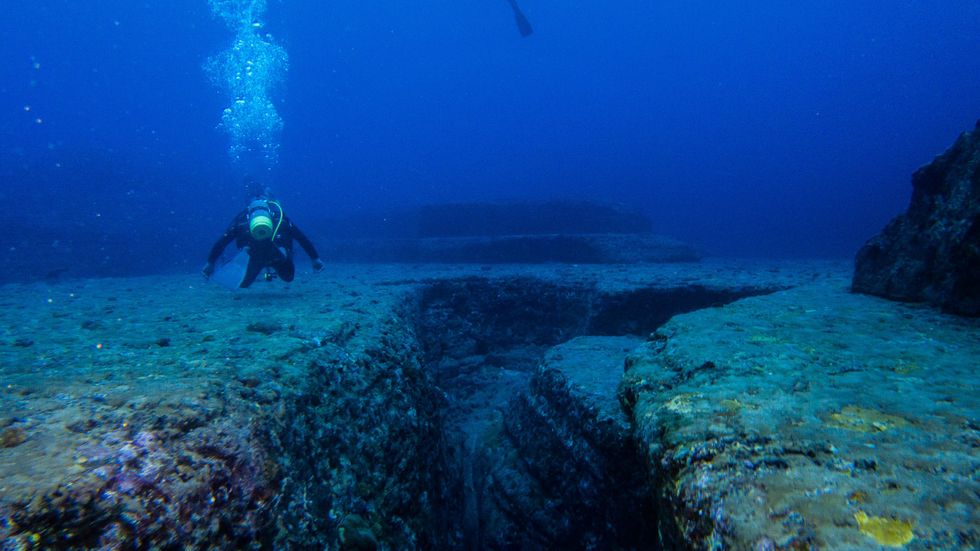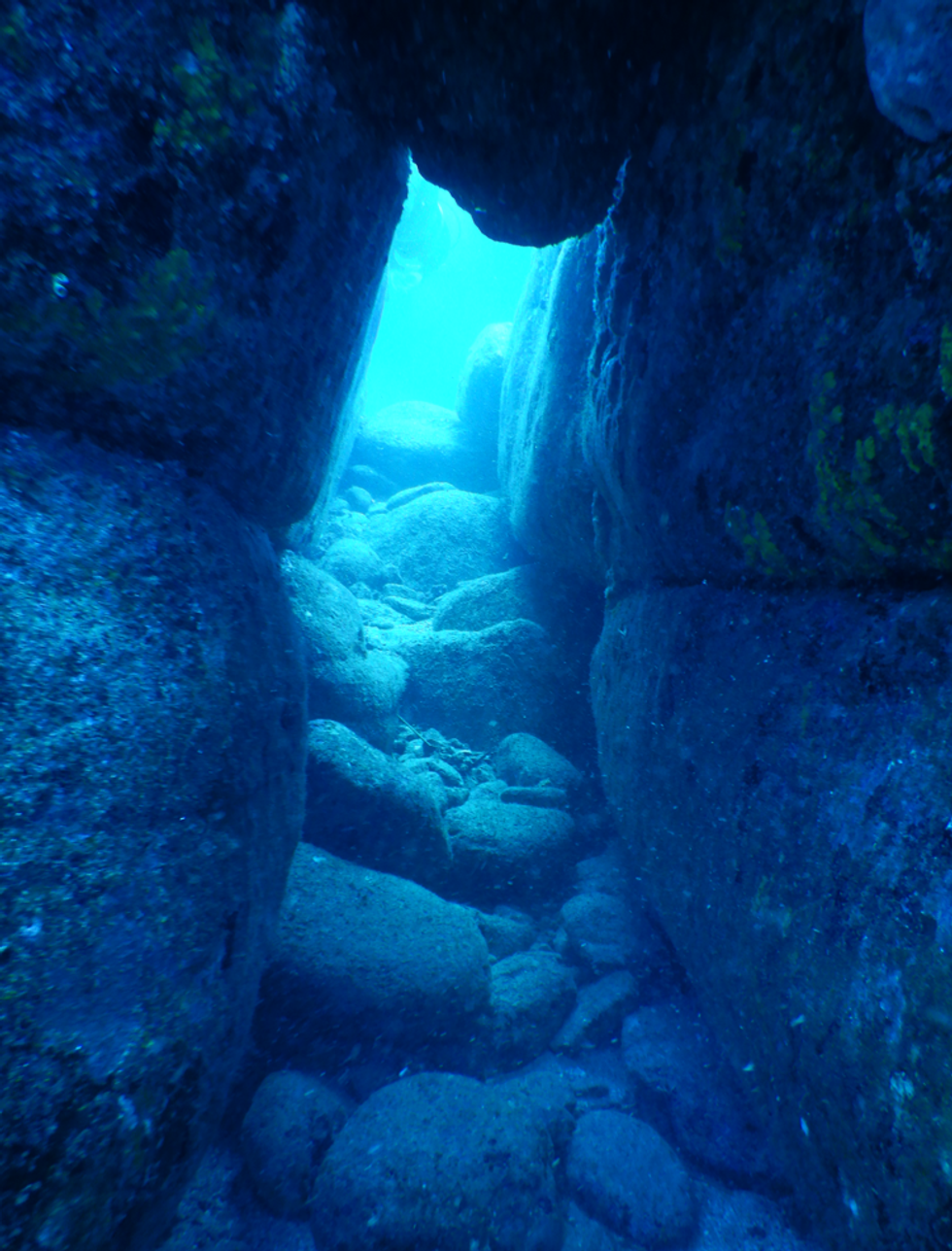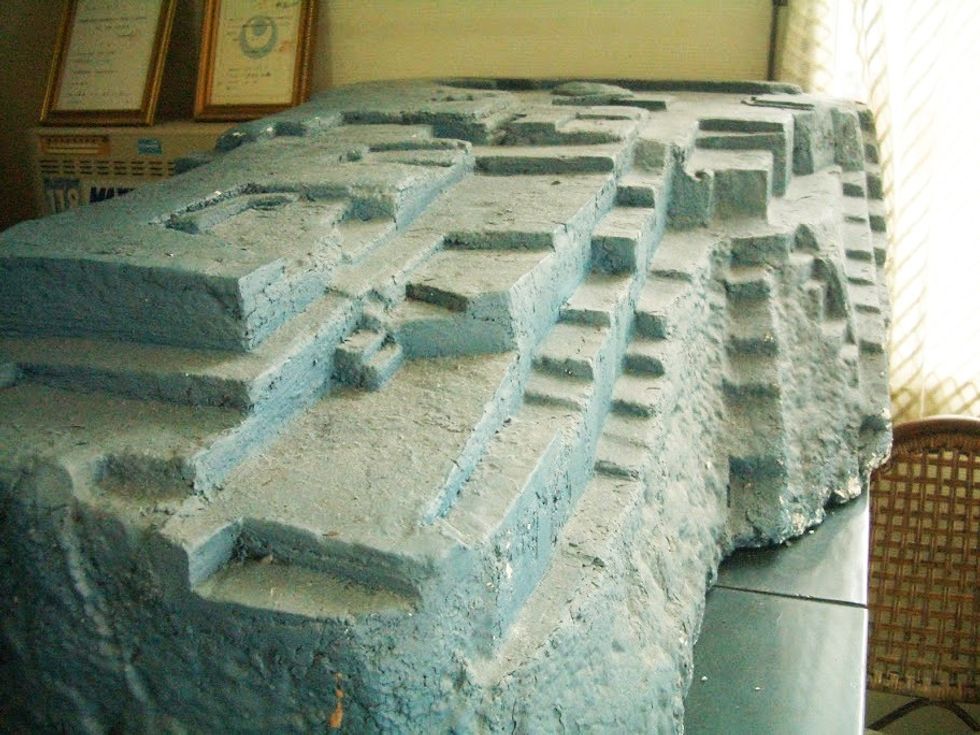If confirmed as man-made, the Yonaguni monument could reveal evidence of a previously unknown advanced society
Don't Miss
Most Read
Trending on GB News
A mysterious underwater structure near Taiwan could challenge everything we know about ancient civilisations.
The Yonaguni monument, discovered in 1986, sits just 82 feet below sea level near Japan's Ryukyu Islands.
The giant structure features sharp-angled steps and stands approximately 90 feet tall.
Its stone composition has led many experts to believe it was constructed by human hands rather than formed naturally.

The Yonaguni monument, discovered in 1986, sits just 82 feet below sea level near Japan's Ryukyu Islands
Wikimedia Commons
If confirmed as man-made, this sunken 'pyramid' could force historians to rewrite the timeline of human achievement.
Tests of the stone reveal it to be over 10,000 years old.
This suggests that if humans built this pyramid, they did so before the region sank underwater more than 12,000 years ago.
Such a timeline would place the Yonaguni monument thousands of years before other famous ancient structures, such as the Egyptian pyramids and Stonehenge.
If confirmed as man-made, this underwater monument could reveal evidence of a previously unknown advanced society.
MORE ARCHAEOLOGY BREAKTHROUGHS:

Tests of the stone reveal it to be over 10,000 years old
Wikimedia Commons
The site recently gained widespread attention after scientists debated its origins on the Joe Rogan Experience podcast.
Author Graham Hancock, who focuses on lost civilisations, argued that photographs clearly show human-made features.
"To me, it's stunning that you see that as a totally natural thing, but I guess we've just got very different eyes," Hancock said.
He pointed to what appear to be arches, megaliths, steps, terraces and even a carved rock 'face'.
However, archaeologist Flint Dibble disagreed: "I've seen a lot of crazy natural stuff and I see nothing here that me reminds me of human architecture."
The Yonaguni monument is not the only ancient structure challenging conventional timelines.
Göbekli Tepe in Turkey dates back to around 9500 BC, over 5,000 years before the Egyptian pyramids.
This Pre-Pottery Neolithic site predates Stonehenge by roughly 6,000 years.

A model of the Yonaguni monument
Flickr
Even more astonishing is Gunung Padang in Indonesia, first rediscovered by Dutch explorers in 1890.
Studies suggest this 98-foot-deep 'megalith' could be over 16,000 years old.
In 2023, scientists claimed this structure could upend conventional wisdom about 'primitive' hunter-gatherer societies.
It potentially reveals the true 'engineering capabilities of ancient civilisations' long before previously thought possible.
Dr Masaaki Kimura, who tested the sandstone's age, maintains the case is still open for debate.
His findings suggest the structure would have been on dry land before sea levels rose at the end of the last Ice Age.
Studies show sea levels were approximately 400 feet lower 20,000 years ago.
However, Dr Robert Schoch of Boston University challenged this theory in 1999.
He argued the 'pyramid' is merely a natural rock formation. He said: "It should be considered a primarily natural structure until more evidence is found to the contrary."









